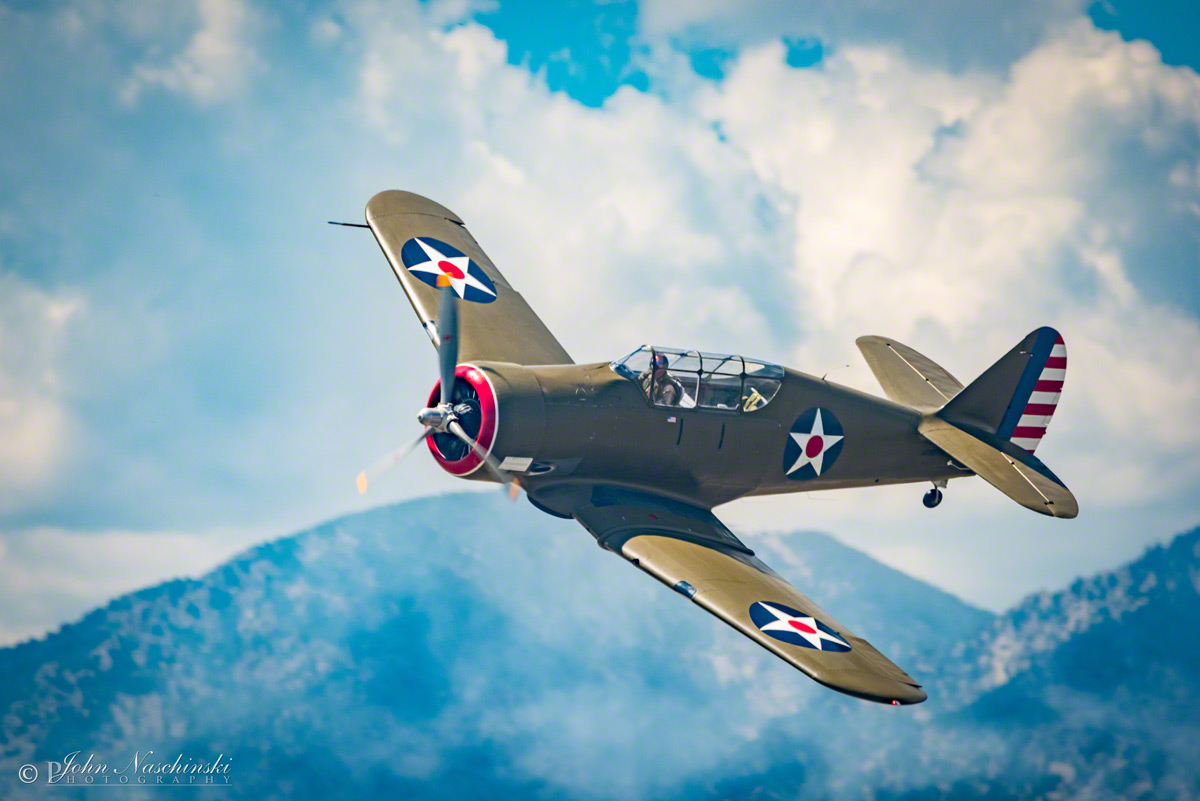Na-50 Aircraft - The Pikes Peak Regional Airshow supports three museums in Colorado Springs—The Ft. Carson 4th Infantry Museum, The Peterson Air and Space Museum and The National Museum of WWII Aviation. These unique institutions are dedicated to the education of future generations through the preservation of our nation's military heritage.
Six NA-68s ordered by the Royal Thai Air Force were seized before export by the US government in 1941, after the Franco-Thai War and growing ties between Thailand and the Empire of Japan. These aircraft were used by the USAAC as unarmed fighter trainers.
Na-50 Aircraft

The NA-50 in the airshow is a unique aircraft, built up as new by WestPac Restorations in 1989 from North American NA-50 drawings using a North American SNJ4 fuselage, T6G wings shortened by 72” to a wingspan of 35' 6” and

Design And Development
with the center wing flap faired over, and with an SNJ2/NA50 style rudder installed. It is powered by a Pratt & Whitney R1340-61 3/2 geared engine. In 1940, the Royal Thai Air Force ordered six aircraft similar to the NA-50 that were designated NA-68.
The changes in the NA-68 included a modified landing gear, new outer wings, heavier armament, and redesigned tail surfaces similar to those adopted on later production trainers. North American Test pilot Lewis Waite flew the first NA-68 on 1 September 1940.[2]
The NA-50 was a single-seat, single-engine, low-wing cantilever monoplane fighter that was developed primarily for export to the Peruvian Air Force in the late 1930's. The design evolved from the North American NA-16/BT-9 basic training aircraft, with the first aircraft being delivered in 1939.
The NA-50 Torito (Spanish slang for "little bull"), built for Peru, was a single-seat fighter design based on the two-seat Basic Combat Demonstrator NA-44. The NA-50 was powered by an 870 hp (650 kW) Wright R-1820-77 radial air-cooled engine and was armed with two .30 in (7.62 mm) M1919 Browning machine guns.

The aircraft were manufactured in May 1939, and test flown at the factory.[1] Peru purchased seven aircraft for the Peruvian Air Force, with deliveries completed in May 1939. In Peruvian service, these aircraft were fitted with bomb racks under the fuselage for light bombs.
The Peruvian NA-50s took part in the Ecuadorian-Peruvian war of July 1941, supporting Army of Peru ground forces.[3] In 1940, the NA-68s (along with a parallel order for NA-69 two seaters) ordered by the Royal Thai Air Force were en route to Thailand when their export clearance was canceled and were returned to the United States where they were assigned the

designation P-64, disarmed and used for advanced fighter training. The North American NA-50 was developed by the North American Aviation as a simple single seat, low-wing, single engine fighter for export. The design was developed from the NA-16/BT-9 basic training aircraft of 1935. The NA-16 evolved into a series of aircraft that were some of the most widely used advanced and basic training aircraft produced by any country and provided the basic
design for a single engine fighter intended for small countries that needed a simple aircraft with modern capabilities and features. P-64 was the designation assigned by the United States Army Air Corps (USAAC) to the North American Aviation NA-68 fighter, an upgraded variant of the NA-50 developed during the late 1930s.

Seven NA-50s were purchased by the Peruvian Air Force, which nicknamed it Torito ("Little Bull").
na 50 plane, p64 aircraft, north american na 50, p 64 fighter, north american p 64, na50, na50 aircraft, p 50 fighter plane